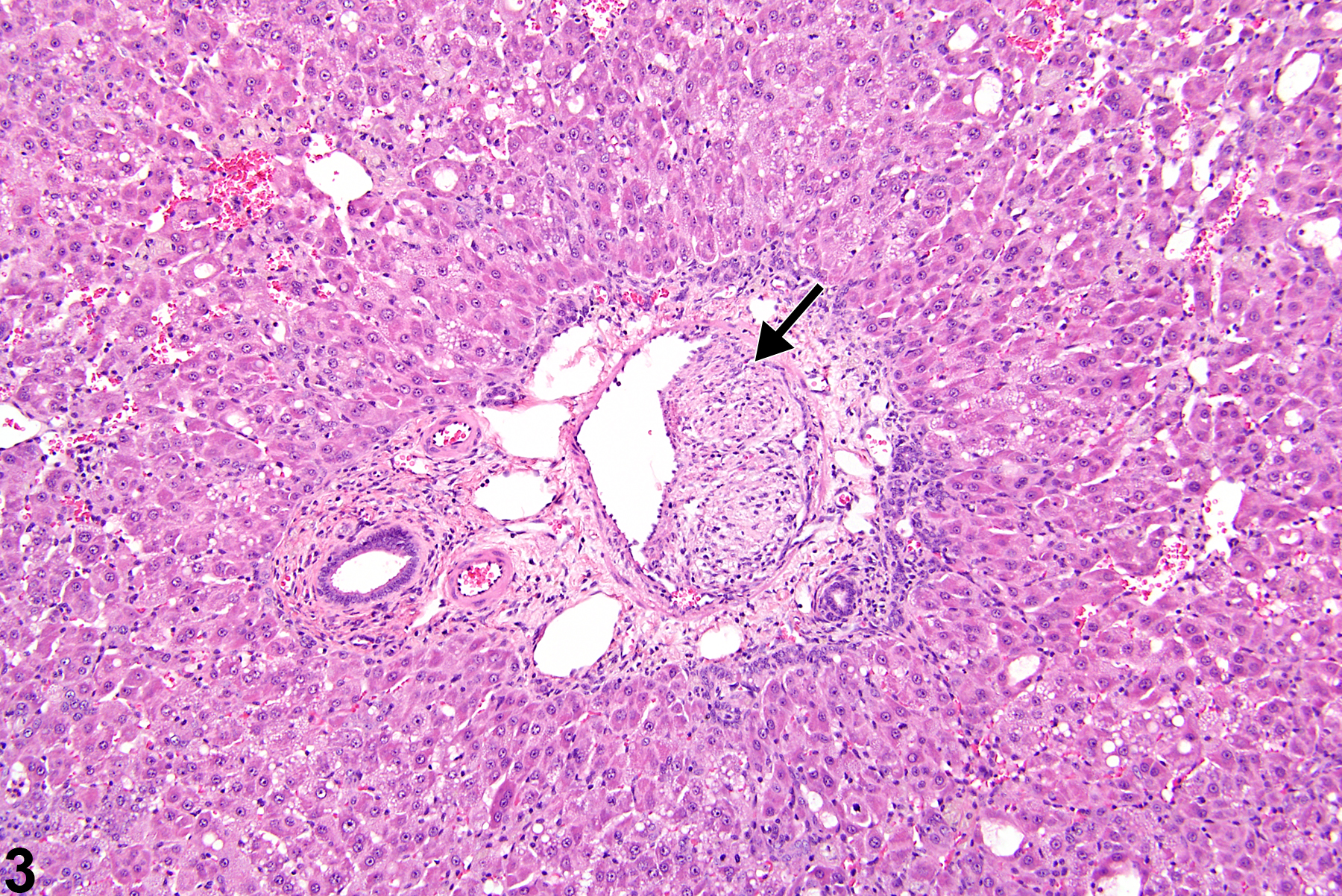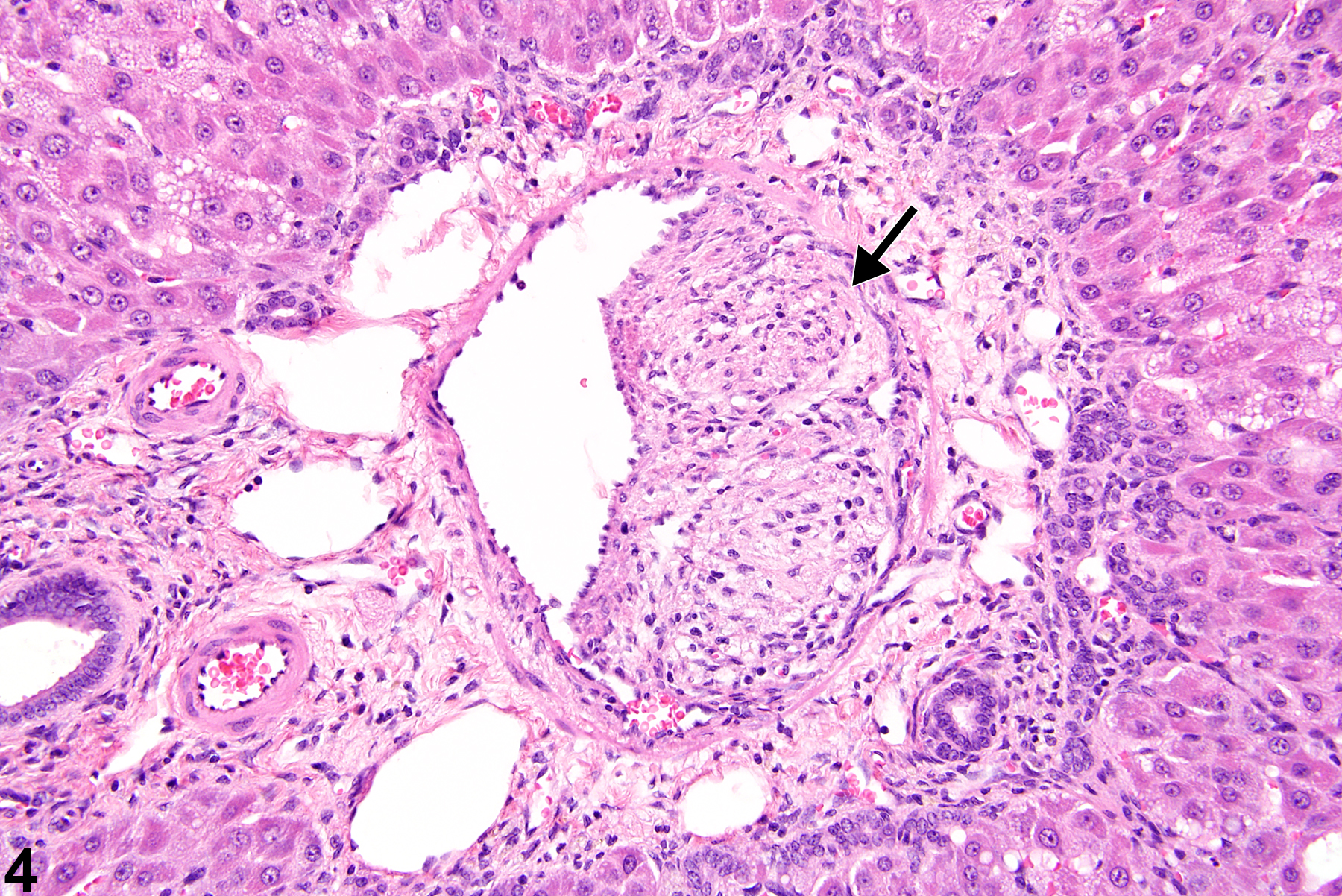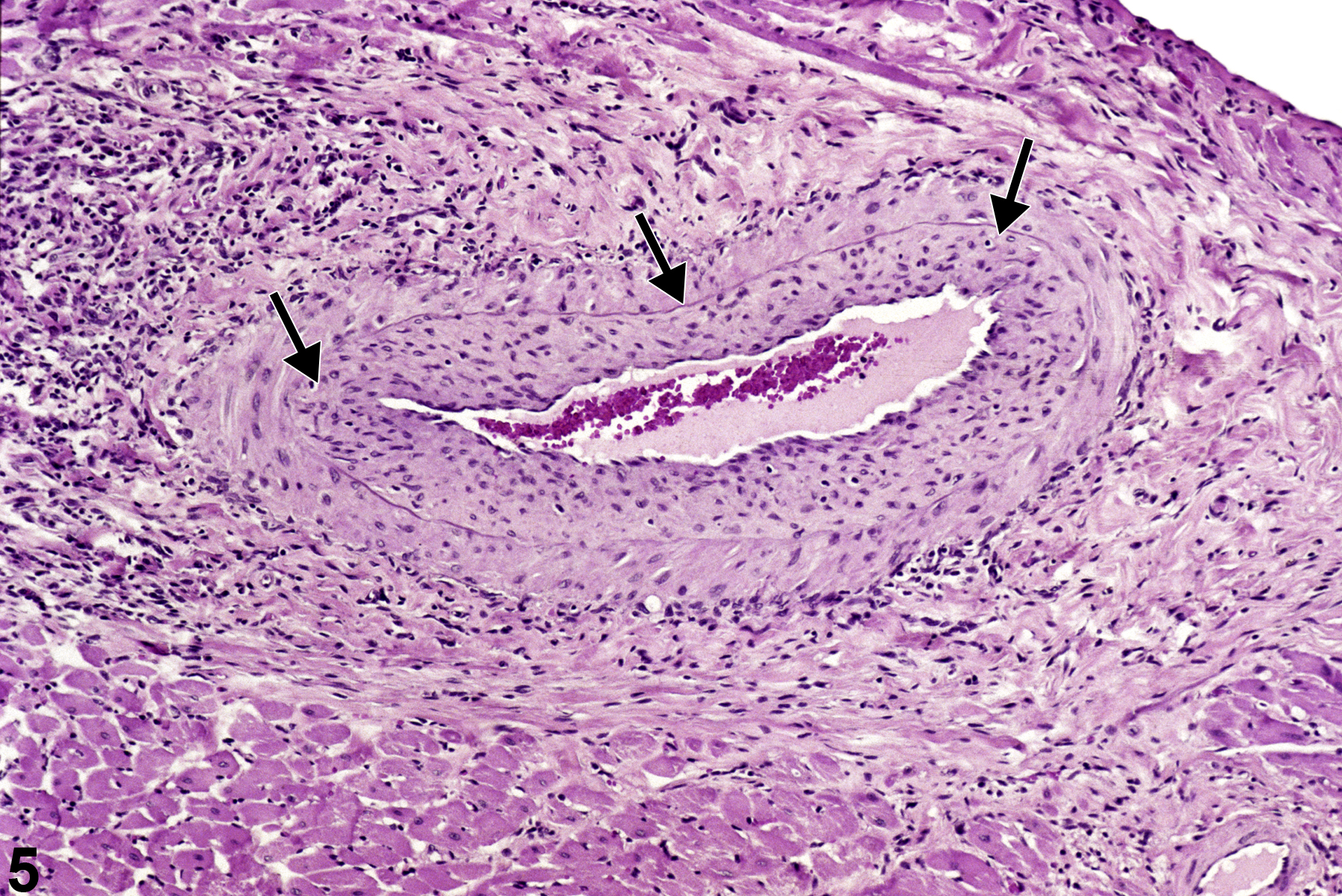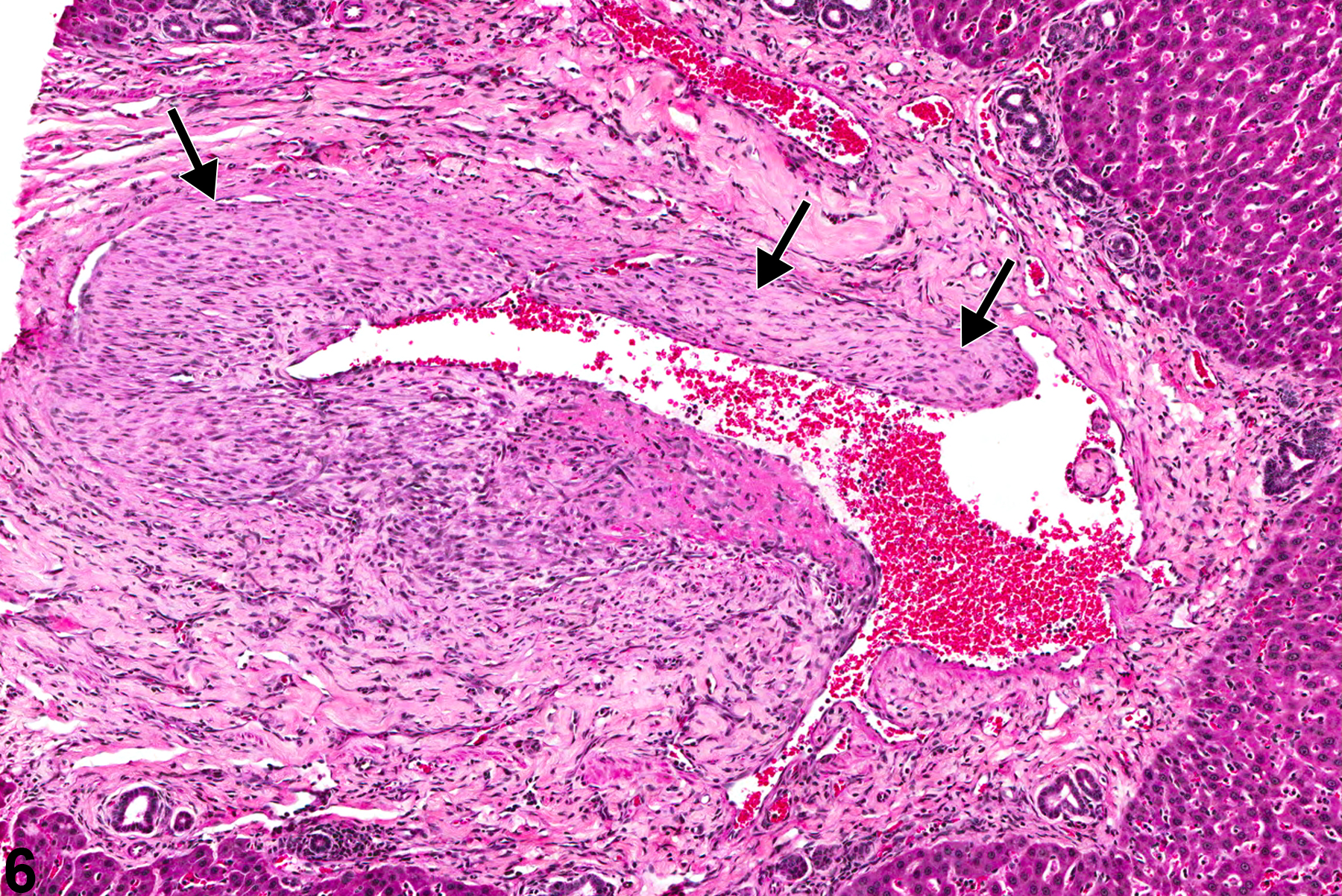Cardiovascular System
Blood Vessel - Proliferation, Intimal
Narrative
Endothelial injury releases inflammatory mediators that recruit leukocytes to the area. These cells express growth factors that promote smooth muscle cell migration from the tunica media into the intima. In other cases, pluripotent stem cells migrate from the basement membrane in response to injury. These cells proliferate in the tunica intima and deposit extracellular matrix, leading to thickening of the intima and a reduction in the vascular lumen. Intimal proliferation is an important cause of restenosis, a common complication of endovascular intervention in humans and animal models of vascular disease.
Strains differ in susceptibility to intimal proliferation. C57BL/6, 129SV, SJL/J, C3H, and iNOS-knockout mice are more resistant to the development of intimal proliferation after vascular injury, while FVB/N, C57L/J, and apoE-, RAG2-, eNOS-, and LDLR-knockout mice are highly susceptible to intimal proliferation following vascular injury. Intimal proliferation may also be induced through mechanical injury to the endothelium. The most commonly used procedures to induce arterial injury in mice are carotid artery ligation with cessation of blood flow, and mechanically induced denudation of endothelium in the carotid or femoral arteries. Both procedures result in intimal proliferation after two to three weeks.
Berger M, Rubinraut E, Barshack I, Roth A, Keren G, George J. 2004. Zinc reduces intimal hyperplasia in the rat carotid injury model. Atherosclerosis 175:229-234.
Abstract: https://www.ncbi.nlm.nih.gov/pubmed/15262178Haschek WM, Rousseaux CG, Wallig MA, eds. 2010. Cardiovascular and skeletal muscle systems. In: Fundamentals of Toxicologic Pathology, 2nd ed. Academic Press, San Diego, CA, 360.
Hui DY. 2008. Intimal hyperplasia in murine models. Curr Drug Targets 9:251-260.
Abstract: https://www.ncbi.nlm.nih.gov/pubmed/18336244Khan R,Agrotis A,Bobik A. 2007. Understanding the role of transforming growth factor-beta1 in intimal thickening after vascular injury. Cardiovasc Res 74(2):223-234.
Abstract: https://www.ncbi.nlm.nih.gov/pubmed/17349984Lalich JJ, Allen JR, Paik WC. 1972. Myocardial fibrosis and smooth muscle cell hyperplasia in coronary arteries of allylamine-fed rats. Am J Pathol 66(2):225-240.
Abstract: https://www.ncbi.nlm.nih.gov/pubmed/5009971Ruusalepp A, Vaage J, Valen G. 2003. A model of neointima formation in the atherosclerotic carotid artery of mice. Interact Cardiovasc Thorac Surg 2:196-200.
Abstract: https://www.ncbi.nlm.nih.gov/pubmed/17670027Tao M,Mauro CR,Yu P,Favreau JT,Nguyen B,Gaudette GR,Ozaki CK. 2013. A simplified murine intimal hyperplasia model founded on a focal carotid stenosis. Am J Pathol 182(1):277-87.
Abstract: https://www.ncbi.nlm.nih.gov/pubmed/23159527
Heart, Artery - Proliferation, Intimal in a male F344/N rat from a chronic study. The wall of an artery in the heart is thickened (arrow).







